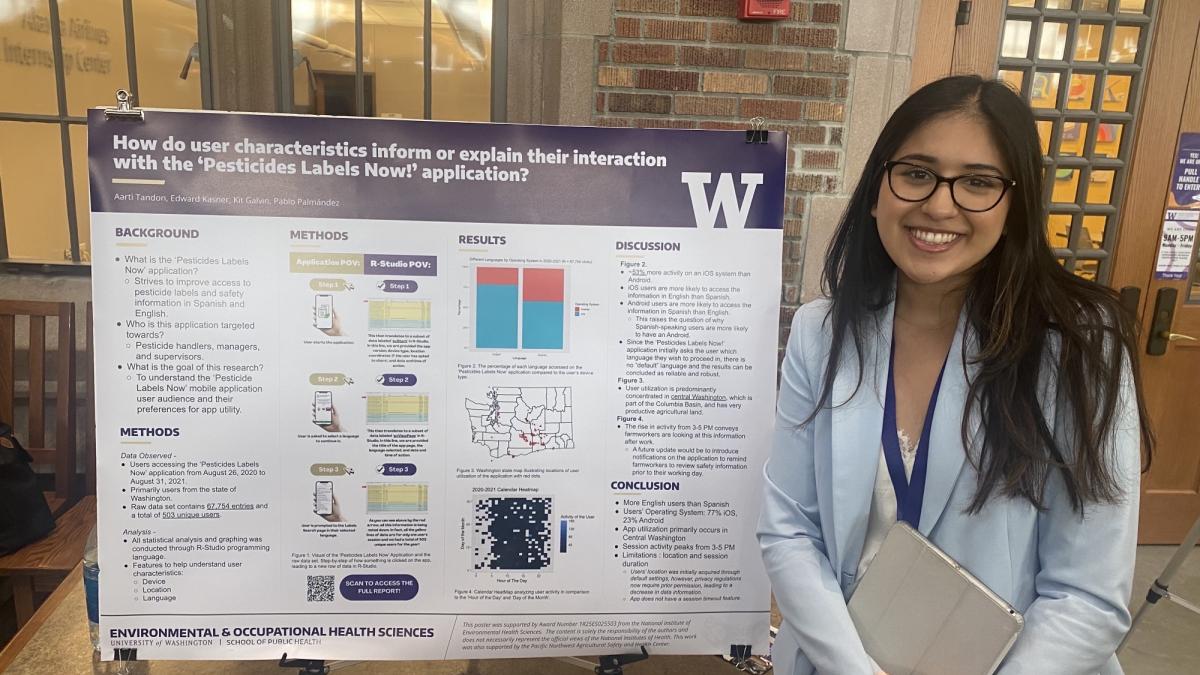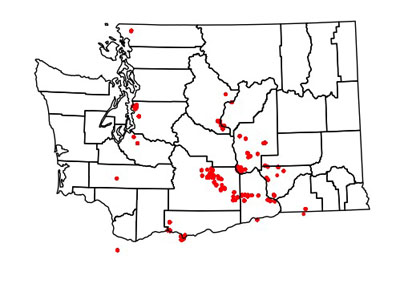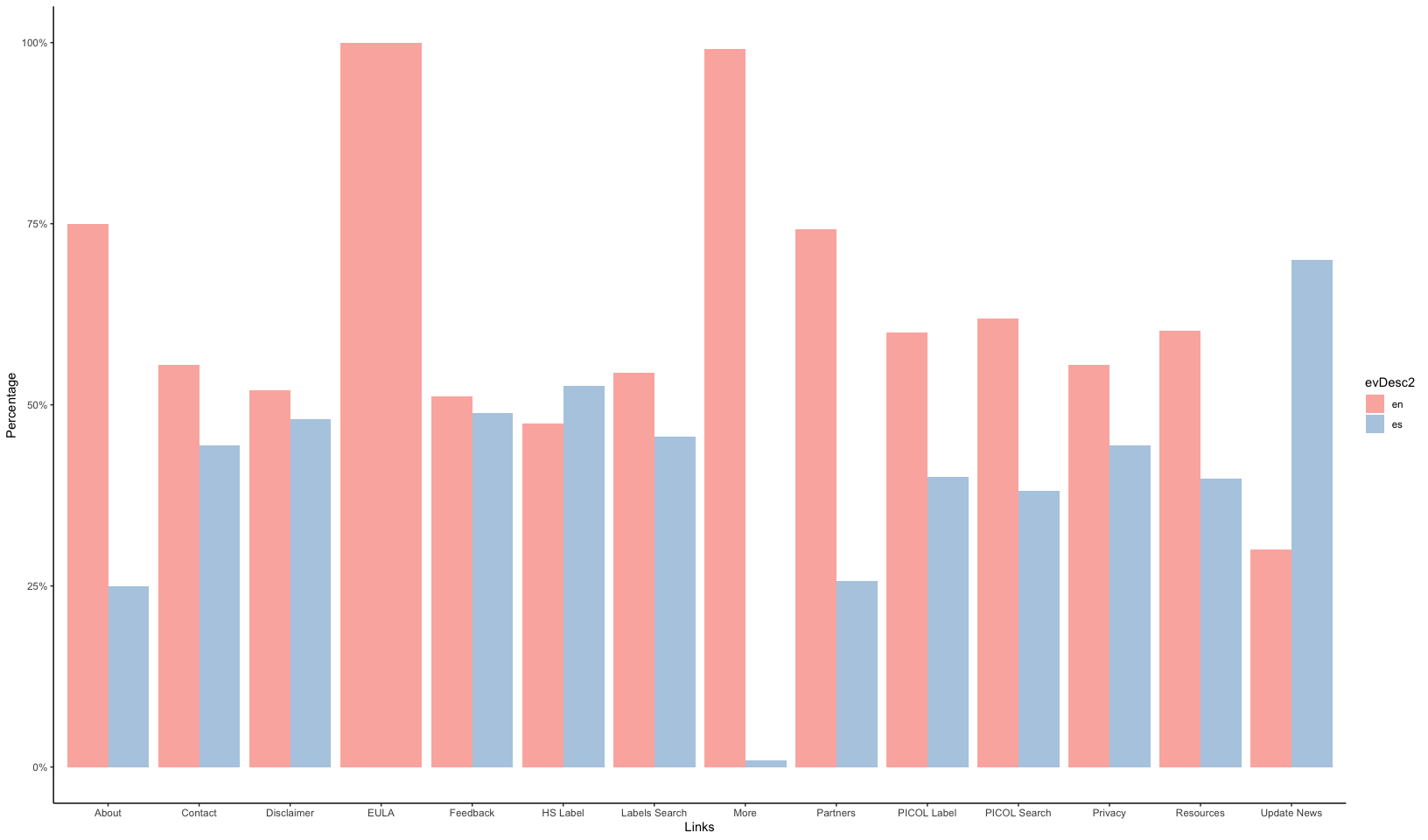
Aarti Tandon
BA, Food Systems, Nutrition, and Health
Hometown
Yorba Linda, CA
Future plans
To pursue medicine in environmental and occupational health.
"While working on the app, I have been able to stand in the middle line of transference where technology meets human health."
- Aarti Tandon
Q: What brought you to the field of agricultural health and safety?
I'm an aspiring physician in environmental and occupational medicine. So, I'm motivated to further agricultural health and safety in response to the prevalent systemic issues rooted in the industry. The harsh reality is that agricultural worker and community exposure from pesticides has led to severe illness, as well as harm towards crops and the environment. In Washington state, the majority (83%) of agricultural workers self-identify as Hispanic with 77% of these laborers reporting they are most comfortable understanding Spanish. The issue lies primarily with the status quo where pesticide information regarding health and safety is solely provided in English by manufacturers. Pesticide handlers, managers, and supervisors are unable to understand this information and change behaviors accordingly. It puts them at risk to the harmful effects of agricultural pesticides. Upon receiving the opportunity to research ‘Bilingual Health and Safety Messaging’ through the SURE-EH program, I was able to stand in the middle line of transference where technology meets human health.
Q: What are the aims of your current research?
It has now been more than two years since DEOHS’s initial launch of the ‘Pesticide Labels Now!’ application (PLN). University of Washington researchers developed this first-of-its-kind mobile application to overcome the status quo where pesticide information regarding health and safety is solely provided in English by manufacturers. The PLN mobile application overcomes this language barrier by improving accessibility to pesticide labels and their safety information in both English and Spanish. My current research investigates whether this app has been successful in targeting the Washington farmworker population in gaining access to this safety information.
As a novice to the coding world, I had the responsibility of learning R-Studio Programming with minimal experience. I definitely came into a lot of debugging issues at first, however, my mentor, Dr. Eddie Kasner really helped me grasp an understanding of how to code. Unfortunately, in this process, I found limitations with the application’s data collection. For instance, while users’ location was initially acquired through default settings, privacy regulations now required prior permission leading to a decrease in data information. Another constraint was with analyzing session duration since the application did not have a timeout feature.

Q: What are the responsibilities of your role?
My primary responsibility with this research was investigating the application’s growth by understanding its raw data. My study analyzed the application’s user audience and their preferences for app utility through their location, device, and language. In fact, our raw data set consisted of over 67,000 lines of data that needed to be analyzed which is where I came in. Through R-Studio programming language (Version 2021.09.1), I conducted statistical analysis and graphing of users accessing the application for one year, August 2020 to August 2021. For further information, here is a link to my report on user analytics.
Q: Can you tell me about a typical day in your position?
While I have worked in research before, I can definitely say that I have never studied environmental and occupational health like this before. The ‘Bilingual Health and Safety Messaging’ research has allowed me hands-on experience in combating pesticide exposure and protecting agricultural workers.
A typical day in my position starts with entering pesticide labels’ safety information into the database for it to be translated, checked, and entered into the app. This work is time consuming, but the reward is that the app is able to provide a varied and updated list of pesticides on a weekly basis. Upon completing my label quota for the day, I create graphs and tables on R-Studio that analyze the application’s audience. The data is pushed up to GitHub for [my mentor] Eddie to look over and suggest feedback.

Q: What do you hope the impact of your research will be?
By understanding how users interact with the application, we are able to create a more user-friendly experience. This in turn, helps to improve access to safety information on pesticide labels. I believe, my research helps reduce gaps in fair and equal access for marginalized peoples. Using statistics and data visualization, I can contribute to research translation and the improvement of human health, environmental resilience, and social and economic equity. Additionally, we know that climate change is expected to expand agricultural pest pressure and drive increased pesticide use in the coming decades. Adoption of tools like this app will continue to foster healthier communities and healthier people through climate resilience and adaptation.
Q: What’s next for your research and for PLN?
With a total of 503 unique users, 1328 sessions, and over 67,000 interactions (i.e. clicks) within a span of one year, the application’s success speaks for itself. Its increased user activity each month, especially during growing season, conveys the success of the application to target a specific population of farmworkers. However, the PLN application is not quite done making an impact on the agricultural community! The team continues to work on delivering up-to-date safety information, expanding the pesticide label list, and improving user experience.
The Pesticide Labels Now team consists of researchers, students, and staff, including Kit Galvin, Pablo Palmández, Idanis Cruz, Elizabeth Rott, and others.
Sarah Fish is the Graphic Design and Media Specialist at PNASH Center and Co-Lead of Center Communications.


